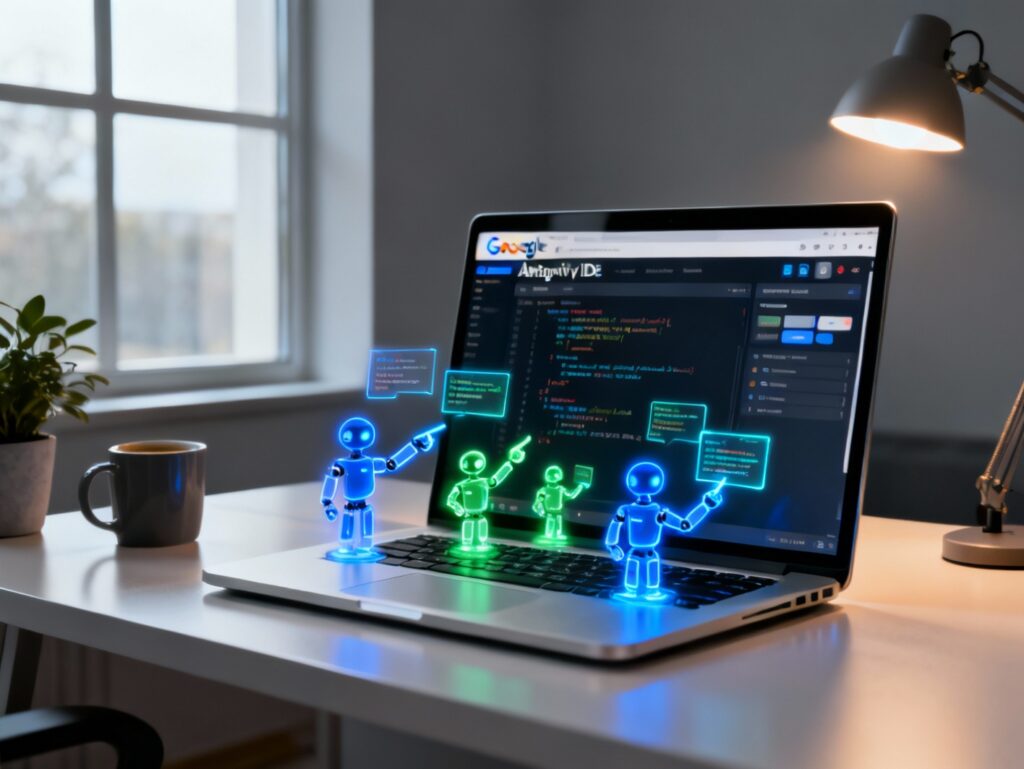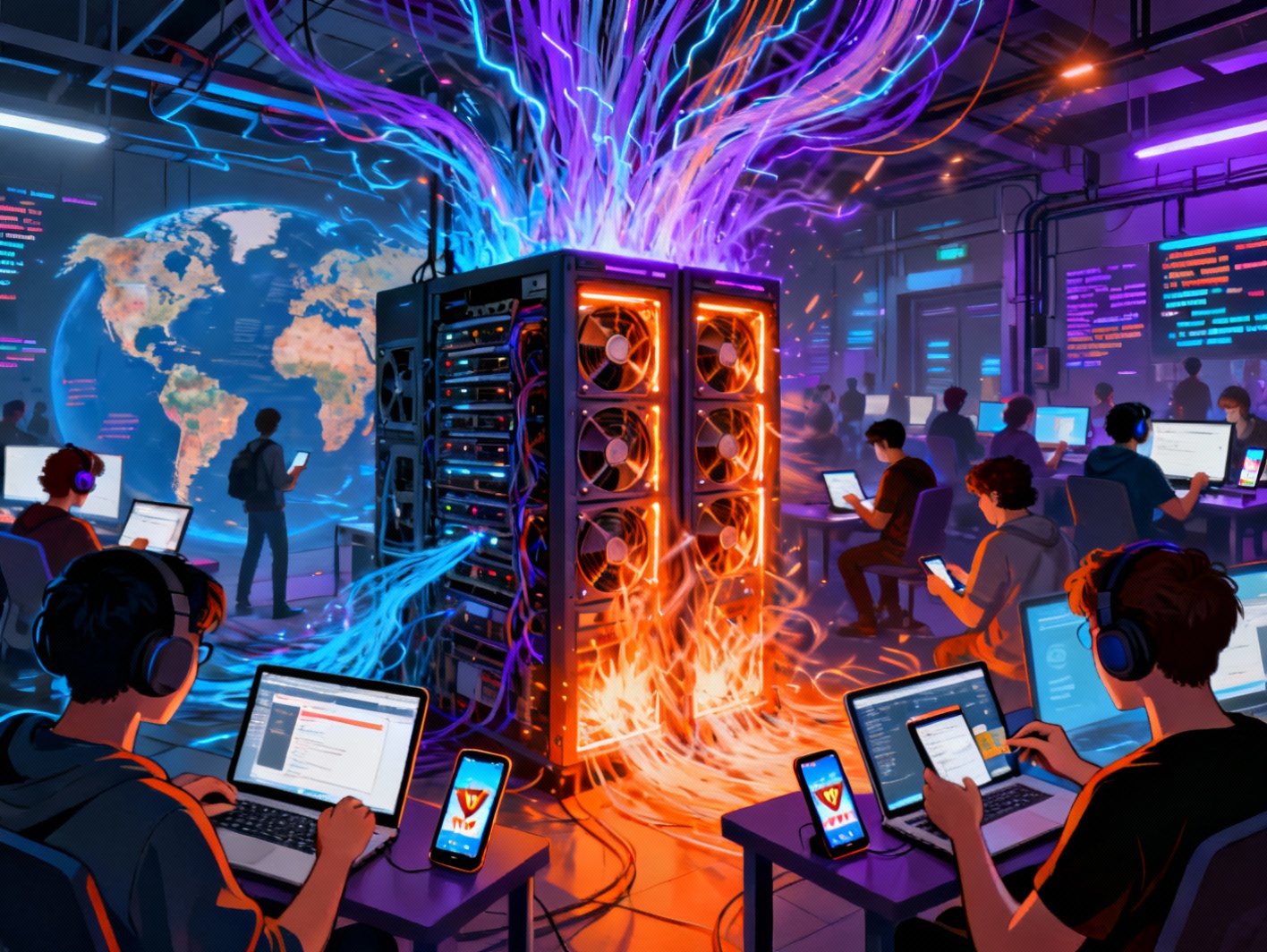
Table of Contents
- Introduction
- Introducing Google Antigravity: A New Era in Development
- Agent-First Architecture: Redefining Developer Workflows
- Key Features: Empowering Developers with Advanced Tools
- Multi-Model Support: Flexibility in AI Integration
- Comparing Antigravity with Traditional AI Coding Tools
- Getting Started with Antigravity: Installation and System Requirements
- Conclusions
Google has introduced Antigravity, a revolutionary AI-powered Integrated Development Environment (IDE) built to redefine how software is created and maintained. With AI now playing an ever-larger role in everyday development tasks, Antigravity takes assistance to the next level by introducing an autonomous and intelligent coding companion. This article walks through the standout capabilities of Antigravity, how it supports multiple AI models, and why its agent-first approach offers an edge over traditional coding assistants. Whether you’re a solo developer or part of a team, understanding Antigravity’s architecture and features can help unlock a smoother and more powerful development experience.
Introducing Google Antigravity: A New Era in Development
Antigravity was officially launched by Google in early 2024, attracting immediate attention across the development community. This next-generation AI IDE supports a wide range of LLMs, including Google’s own Gemini 3 Pro, along with cross-model compatibility for Anthropic Claude Sonnet 4.5 and GPT-OSS from OpenAI. This cross-compatibility means developers are able to choose the language model that best suits their context or organization’s tech stack. Antigravity runs seamlessly on Windows, macOS, and Linux platforms, ensuring that development can happen on nearly any machine without friction.
The significance of this launch lies not just in new tooling, but in a paradigm shift it introduces. Antigravity moves away from simple autocomplete or suggestion tools and into the domain of autonomous development. In an era where agile development cycles demand fast iteration and fewer bugs, Antigravity introduces a new type of collaboration—between human developers and autonomous agents, working in synergy. Its debut marks a pivotal moment in AI-powered software tooling.
Agent-First Architecture: Redefining Developer Workflows
At the core of Antigravity is its agent-first paradigm, which moves beyond static coding assistants and towards intelligent software partners. Rather than waiting for a specific prompt, agents in Antigravity proactively plan, execute, and validate development tasks. These agents operate based on natural-language objectives provided by the user. Given a directive, the agent will brainstorm subtasks, prioritize steps, write code, test it, and refine its own outputs until the task is complete.
What sets Antigravity apart is its dual-interface experience. The Editor View maintains the familiarity of traditional IDEs, allowing users to manually inspect, edit, or override what the agent is doing. Simultaneously, the Manager Surface displays real-time updates of an agent’s decision-making process—its plans, execution steps, and validations. This transparency offers developers a new kind of control and understanding, where they can intervene when necessary or simply observe as the system works autonomously.
This setup enhances productivity significantly. Developers are not stuck reviewing every line of generated code but can instead focus on higher-level problem-solving. The agent becomes a coding partner that understands context, persists across sessions, and adapts to user feedback over time.
Key Features: Empowering Developers with Advanced Tools
Antigravity introduces a suite of core features that elevate it beyond a simple AI-powered code editor. One of the most revolutionary is autonomous planning, where the agent breaks down complex programming tasks into actionable subtasks, mimicking the workflow of a senior engineer. It doesn’t just wait for commands—it suggests features, creates files, and even recommends architectural improvements.
Another significant capability is direct system access. Antigravity agents don’t operate in a sandbox—they interact with your actual file system, environment variables, version control systems, and even browser windows for UI testing. This enables the agent to run scripts, fetch logs, or set up servers without manual intervention, making it suitable for both backend and frontend workflows.
Once the agent writes code, it doesn’t stop there. Through built-in self-validation, it runs unit tests, integration checks, and static analysis autonomously. It can even debug failing tests and retry with fixes—improving code quality and reducing manual QA work. Additionally, multi-agent orchestration lets multiple agents collaborate on larger projects simultaneously, coordinating through a shared plan. This allows parallel development on different modules, helping teams accelerate software delivery without sacrificing accuracy.
Multi-Model Support: Flexibility in AI Integration
One of Antigravity’s key advantages lies in its flexibility with AI models. Rather than binding users to Google’s proprietary systems, Antigravity supports multiple LLMs, allowing developers to switch depending on task complexity, cost, or preference. The primary model, Gemini 3 Pro, provides deep integration with Google’s developer ecosystem, offering enhanced performance for tasks like code refactoring, optimization, and documentation generation.
However, Antigravity goes further by offering first-class support for Anthropic Claude Sonnet 4.5, known for its reasoning clarity and adherence to coding norms, and GPT-OSS—an open-source LLM aligned with OpenAI’s ecosystem. Each model has designated strengths. For instance, developers working on safety-critical systems or regulatory-heavy applications might lean toward Claude Sonnet’s rigorous checking, while open-source enthusiasts may opt for GPT-OSS for its community-driven transparency.
This multi-model system empowers developers to tune performance per project. Team leads can assign models to agents based on task characteristics, ensuring the most suitable AI brains are applied to specialized needs. Over time, this avoids lock-in and promotes a more dynamic integration of AI into diverse programming workflows.
Comparing Antigravity with Traditional AI Coding Tools
Antigravity differentiates itself from existing tools like GitHub Copilot and Cursor through a more ambitious and autonomous architecture. While Copilot primarily enhances autocomplete suggestions and Cursor assists in local context reasoning, Antigravity transforms the role of AI from assistant to collaborative engineer.
First, Antigravity offers autonomous task execution. Unlike Copilot, it can read objectives, plan how to achieve them, execute those plans without step-by-step prompting, and test or debug outcomes. In Cursor, while some iterative improvements exist, the workflow is still largely prompt-driven. Antigravity’s agents undertake entire features end-to-end.
Second, its direct system access gives Antigravity broader control. Agents can manipulate files, commit code, run shell scripts, or deploy containers. No similar depth of access is available in Copilot or Cursor. Furthermore, Antigravity includes built-in browser UI testing. It can render user interfaces in Chromium-based views, perform visual regression tests, and simulate user flows to ensure frontend components behave as intended.
Finally, self-validation is integral to Antigravity. While Copilot may generate potentially buggy code without post-checks, Antigravity runs tests and debugging passes before marking work complete. In short, it’s not just smarter—it’s significantly more autonomous and engineering-ready.
Getting Started with Antigravity: Installation and System Requirements
Setting up Antigravity is simple but requires attention to a few prerequisites. To begin, ensure your system meets the minimum requirements: a 64-bit processor, at least 16 GB of RAM, and a recent operating system—Windows 10+, macOS 12+, or a modern Linux distribution like Ubuntu 22.04.
First, download the installer directly from Google’s developer platform. For macOS and Windows, this is a standard GUI installer. On Linux, it’s a shell script requiring execution permissions. Once installed, the system will prompt the user to sign into a Google Developer Account to unlock full features, including access to Gemini 3 Pro.
If using third-party LLMs like Claude Sonnet or GPT-OSS, API keys must be configured in the Antigravity settings panel. The app provides clear prompts to walk you through this, including model prioritization and fallback settings. Ensure Python 3.10+ and Node.js are preinstalled, as components of the validation layer rely on them for test execution. Finally, you may be asked to grant Antigravity elevated permissions for filesystem and shell access.
Once setup is complete, the system launches with onboarding tutorials. These help configure your first agents, explaining Editor View, Manager Surface, and preferred workflows. Installation is typically smooth but benefits from reading each prompt carefully to ensure agents have the access required for autonomous operations.
Conclusions
Google Antigravity introduces a powerful shift in how developers interact with code and artificial intelligence. With a rich set of features that includes autonomous agents, support for multiple AI models, and a flexible interface, it’s more than just an IDE—it’s a development partner. Its ability to plan, execute, and validate code independently helps reduce bugs and iteration time, freeing up human developers to focus on creativity and innovation. For any developer looking to stay on the cutting edge, Antigravity is a standout tool that combines deep AI capabilities with practical engineering usability. As the software landscape continues evolving, Antigravity sets a new benchmark for what the future of development should look like.










